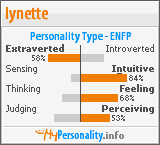J.S. Bach: Toccata & Fugue in E major, BWV 566
>> Sunday, November 15, 2009
Jürgen Marcussen (1781–1860) founded the organ-building company in 1806. They used the name Marcussen & Reuter from 1826 to 1848, when the name became Marcussen & Søn after the founder's son, Jürgen Andreas Marcussen, joined the firm. The company has been based in a house in the small town of Åbenrå, in southern Jutland, since 1830. Several organs built in Scandinavia and North Germany in their first decades are still in use today, the oldest dating from 1820.
Johannes Lassen Zachariassen (1864–1922), a grandson of the founder's daughter, took over the firm from 1902 to 1922. The firm's work was still based at this stage on the Baroque organ-building tradition, but from about 1900, in common with nearly all other organ-builders, they began making use of pneumatics, electricity, and other innovations popular at the time, typified by the organs of Cavaillé-Coll.
This new development did not last long. They were one of the first organ builders, following the 1925 organ conference in Hamburg and Lübeck, to recognize the superiority of the sonic, structural, and technical principles of the North-European Baroque organ; they returned to these principles from about 1930.
The guiding figure behind the change was Sybrand Zachariassen (1900-1960), who took over management of the firm in 1922 at the age of 21. Within a few decades, Marcussen organs began to gain an international reputation, particularly as fine models of the mechanical organ, which again became the preeminent basis of organ-building practice in the second half of the twentieth century.
Sybrand Jürgen Zachariassen (b Flensburg, 22 Oct 1931) became director in 1960. In 1994/1995 the firm became a family-owned limited company, when Claudia Zachariassen (born 26 May 1969 in Sønderborg, the 7th generation of the Marcussen/Zachariassen family) joined the firm; she became president in 2002.
Marie-Claire Alain, Marcussen organ (Nicolai Kirke, Kolding, Denmark)





























0 comments:
Post a Comment